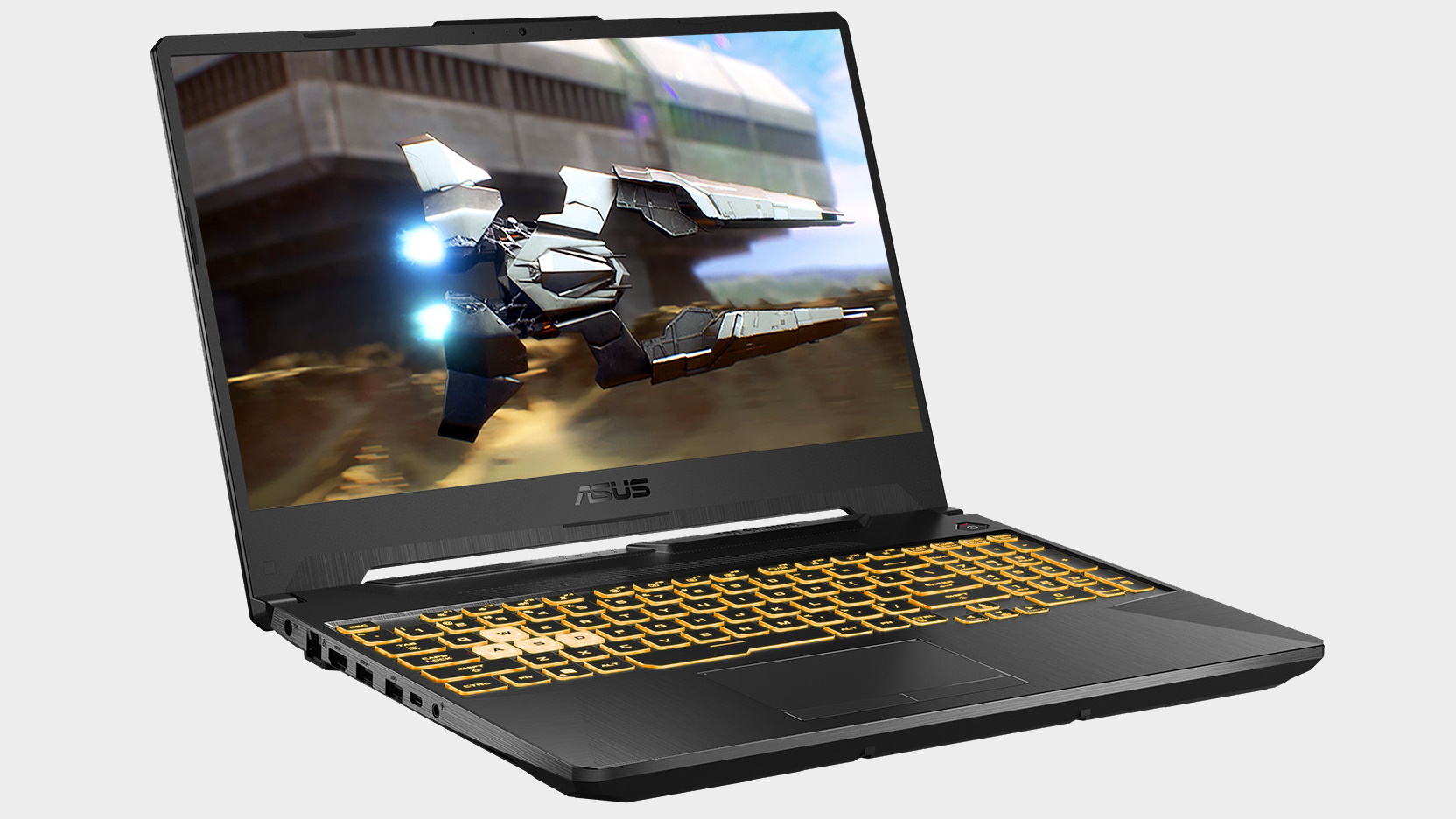Our Verdict
In an age of thin and lights, the TUF Gaming A15 needs to run cooler and quieter than this to justify its inherent chunkiness.
For
- Powerful GPU and CPU
- Great 240Hz screen
- Tempting price
Against
- Runs hot and loud
- Uninspiring looks
PC Gamer's got your back
The Asus TUF Gaming A15 FA506QR is one of the first laptops to hit the gaming shelves packing the RTX 3070 mobile GPU. Not only that, but it's also one of the first machines to feature the AMD Ryzen 7 5800H. This combo of CPU and GPU should make for a good pairing, as both of them are mainstream takes on the latest tech. Throw in the fact that Asus has this machine at the more reasonable end of the price spectrum, and on paper at least, there's a lot to be interested in here.
Asus has eased these two components into its TUF Gaming chassis, which it has updated slightly for 2021. There's native support for Wi-Fi 6 as standard, which is a good future-looking inclusion, and Asus has improved the laptop's stamina too, as the machine now packs a 90Wh battery.
With this refresh, you also get some exciting options on the display front, and the model I'm looking at here has a 240Hz 1080p panel that offers 100 percent sRGB colour gamut coverage. It's bright, vibrant, and fast. Pretty much perfect for gaming. The RTX 3070 may struggle to hit 240fps in the latest single-player games, but in esports games like Vaolrant and CS:GO there's every chance you'll hit those kinds of framerates.
Just as it is on the desktop, so the mobile version of the RTX 3070 is where the sensible money is. It's true that the RTX 3080 is a more powerful GPU, but it's also true that it costs considerably more. You'll do well to find a well-rounded RTX 3080 gaming laptop for less than $2,000, while as this machine proves, the RTX 3070 can be had for a good chunk less than that. And it's still very much an eminently capable card, as we'll come on to shortly with the benchmarks.
With this generation of mobile GPUs, Nvidia has given mobile manufacturers more choice when it comes to thermals and power. This means that it isn't just a case of saying that there's an RTX 3070 in the machine, this one for instance is the 95W version. There are faster models out there, all the way up to 125W, but they need serious cooling to stay on top of the heat output.
Screen size: 15.6-inch
Resolution: 1920 x 1080
Refresh rate: 240Hz
CPU: AMD Ryzen 7 5800H
GPU: Nvidia RTX 3070 (95W)
Memory: 16GB DDR4
Storage: 1TB NVMe SSD
I/O: 1x 3.5mm audio jack, 1x RJ45 LAN port, 1x HDMI 2.0b, 3x USB 3.2 Type-A, 1x USB 3.2 Type-C
Price: $1,799 | £1,599
The AMD Ryzen 7 5800H is a similarly capable chip, that won't trouble the top of the performance benchmarks, but it will provide you with more than enough power for most tasks. This 8-core, 16-thread processor has a stock clockspeed of 3.2GHz, with a max boost of 4.4GHz. It won't hold back your gaming, and it'll handle serious number-crunching at the same time. If you're looking to handle video editing or rendering between games, then there's nothing to worry about here.
The rest of the spec is pretty much as you'd expect from a well-thought-out mid-range gaming laptop: 16GB of RAM will cover you for games for a while yet, and the 1TB PCIe SSD is speedy and has enough space for a decent chunk of your Steam library.
I may have been spoiled by so many high-end builds recently, but the chassis feels a little budget here. The main surface is fine, with some nice brushed steel effect, but flip it over, and the plastic bottom doesn't look so good. The cut hexagon motifs do aid airflow, but it feels like the plastic grills would be easy to break, although the panel does flex a fair amount. The TUF design on the lid works well enough at least, and it does look modern.
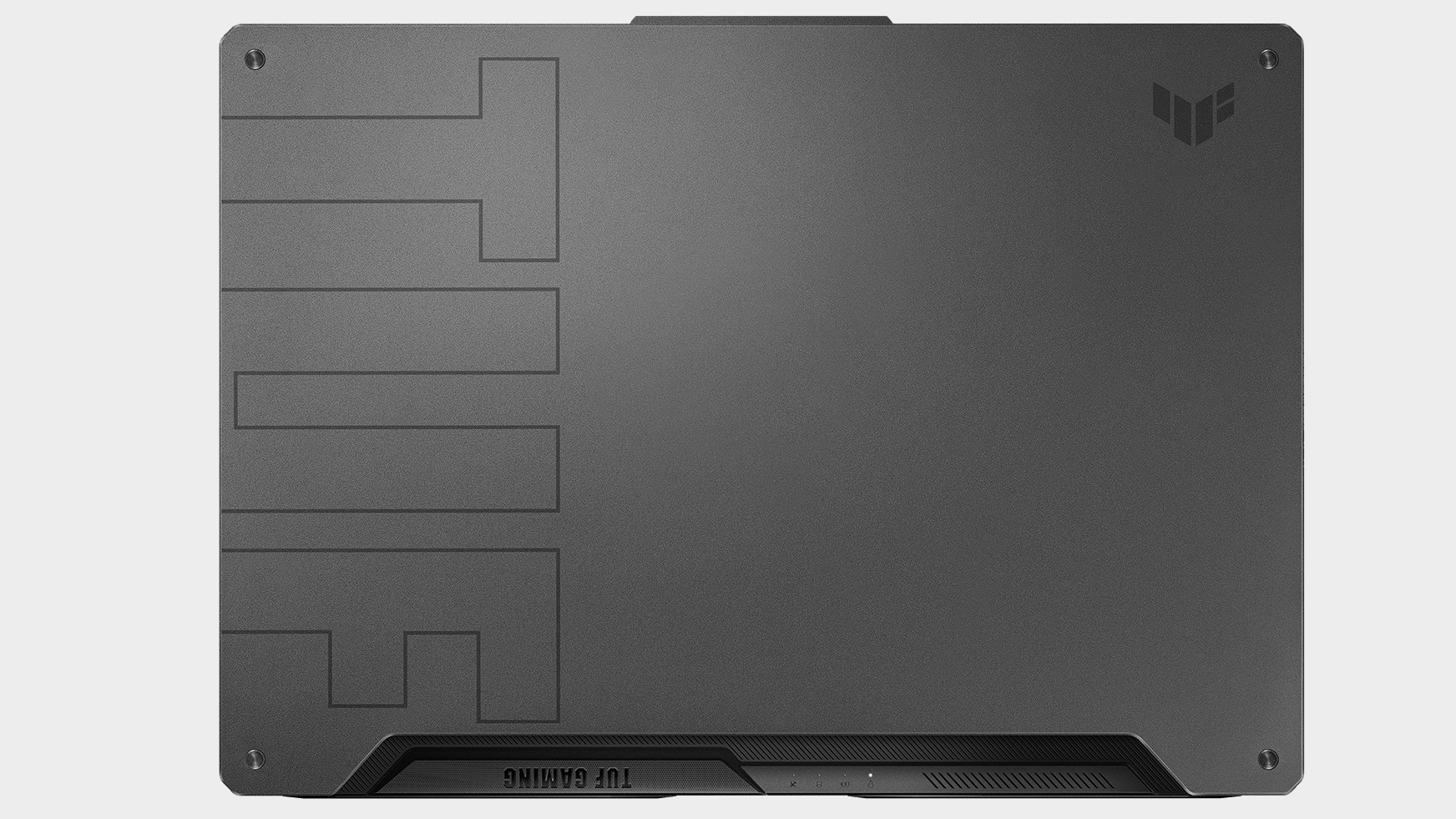
The right-hand side has a large vent and a single USB Type-A port. There are two more vents on the rear of the machine, but there isn't one on the left-hand side, which means there's more space for plugging in your peripherals. The microphone/headphone jack can be found here next to the single USB 3.2 Type-C port and the pair of USB 3.2 Type-A ports. This is also where you'll find the HDMI connector, ethernet port and finally, the power connector. The accompanying 200W power brick is a reasonable size and is textured for a modern look.
Some gaming laptops may have squeezed mechanical keyboards into their chassis, but this isn't something that is seen as essential for every system, as long as the keyboard feels responsive and is good to type on. Luckily for Asus, the TUF Gaming A15 makes for a quality typing experience.
There's more than a touch of RGB lighting for the keys, with the WASD keys standing out from the rest of the keyboard thanks to their transparent design. There are three levels of brightness for the keyboard, along with turning the lighting off completely, and this can be tweaked either using the Aura software or more conveniently using a keyboard shortcut.
The touchpad is serviceable—not too big, not too small, with actual buttons to press for the left and right mouse buttons, which means you're not left guessing like you are on those monolithic clickpad ones. Still, this is a gaming laptop first and foremost, and as such you're going to want a mouse when using it.

Gaming performance

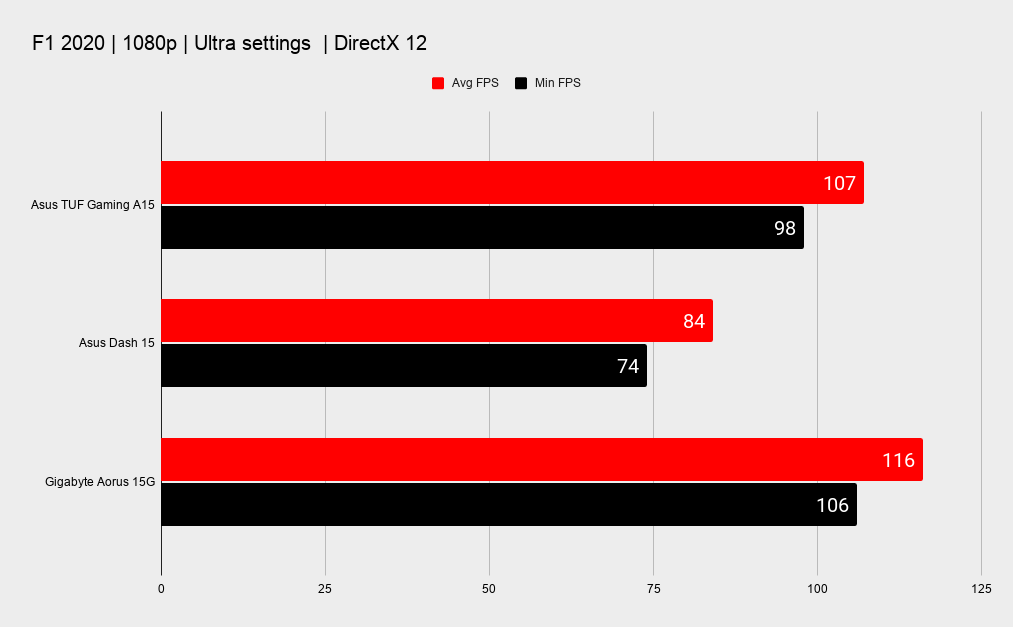

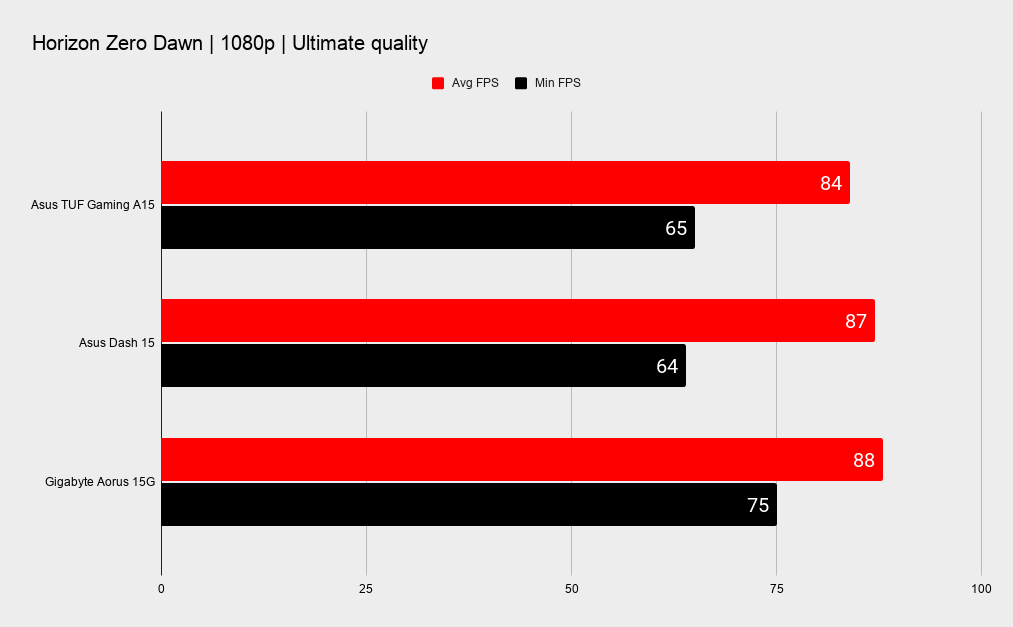
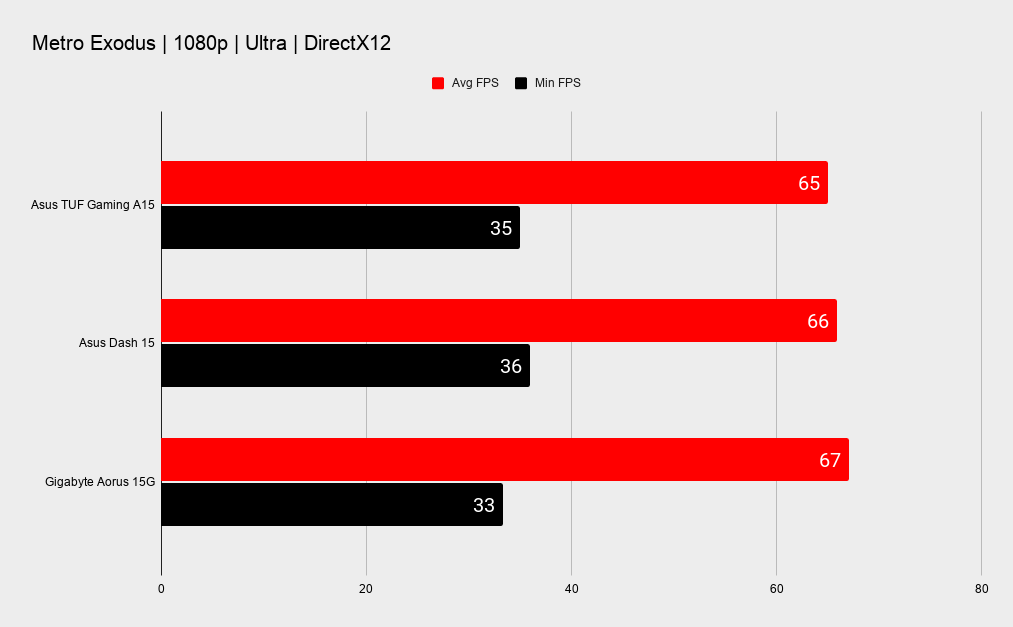


Ultimately, it's the performance that really decides the fate of any gaming laptop and this latest iteration of the TUF Gaming brand can hold its head up high enough. It's not the fastest machine around, and it isn't the quietest or the finest looking either, but it does pack a decent punch at 1080p.
Essentially it will handle any game you throw at it, and that's at the top settings with everything looking incredible. As this is an Nvidia RTX GPU it means you have access to the ray tracing and DLSS as well, which isn't just a checkbox with this generation. The Metro Exodus framerate with RTX and DLSS on is 57fps, with minimums of 32fps. Compare that with the 65fps at the Ultra settings, and you can see that ray tracing isn't as costly as it once was.
System performance

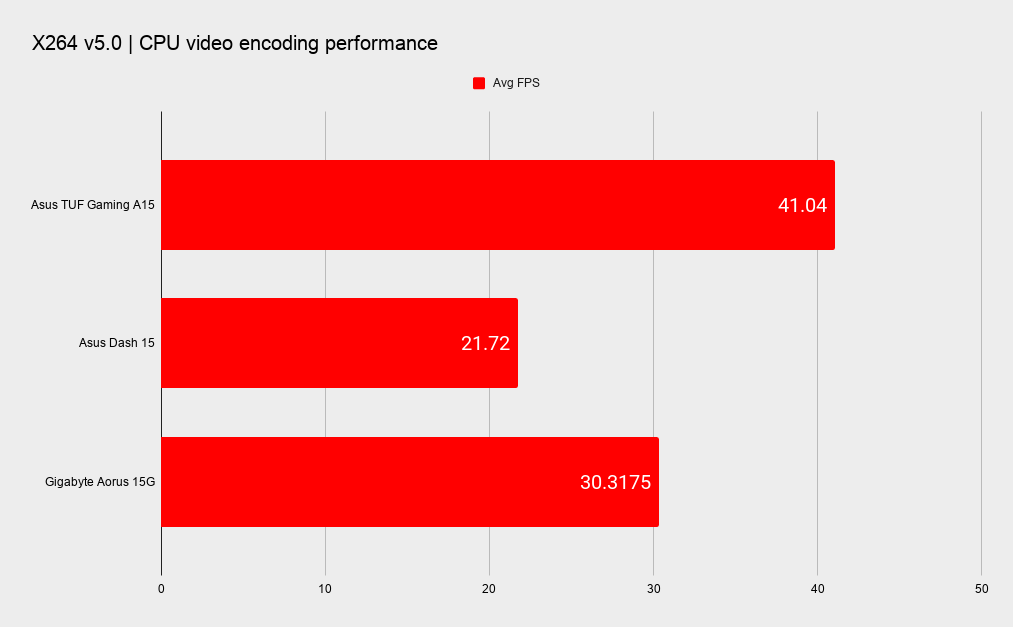
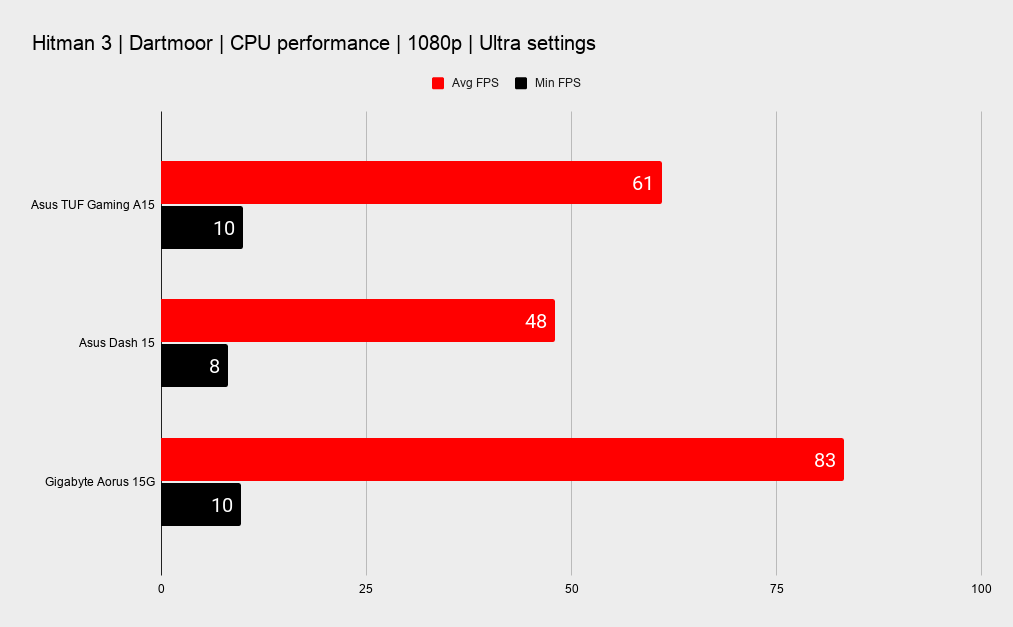
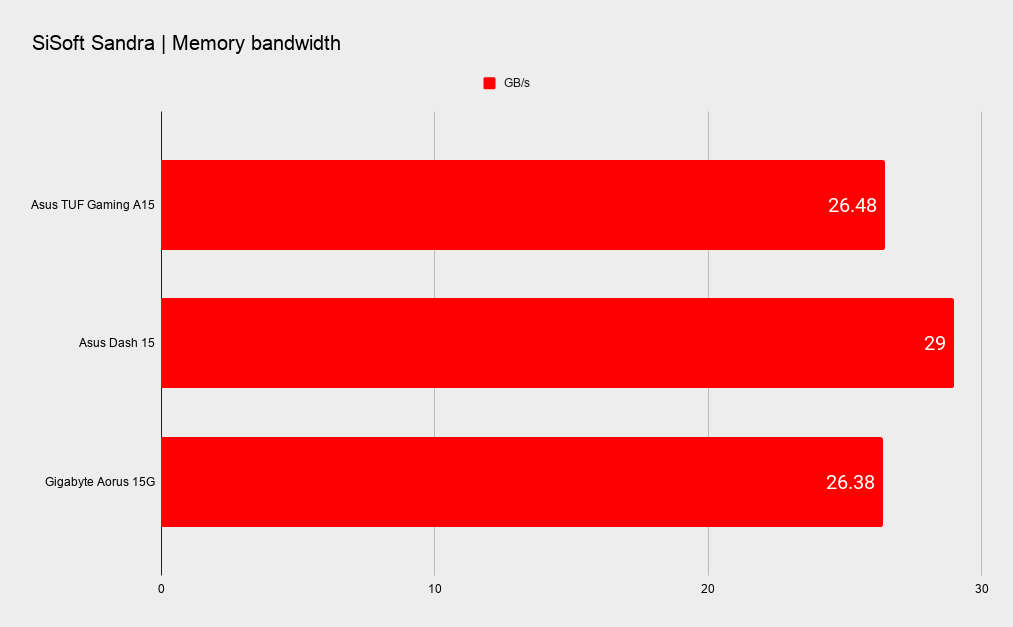

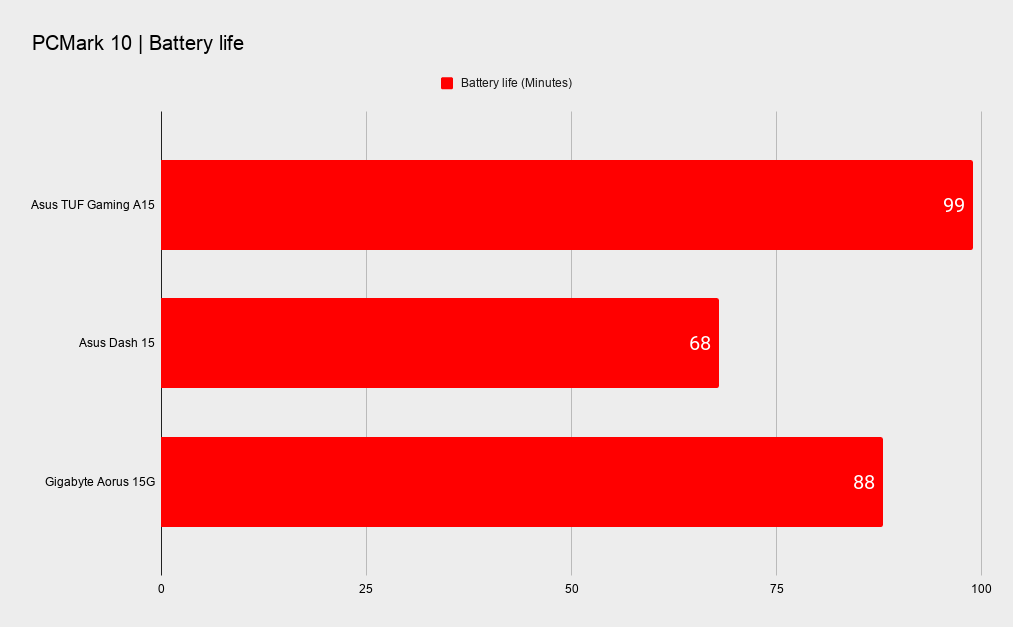
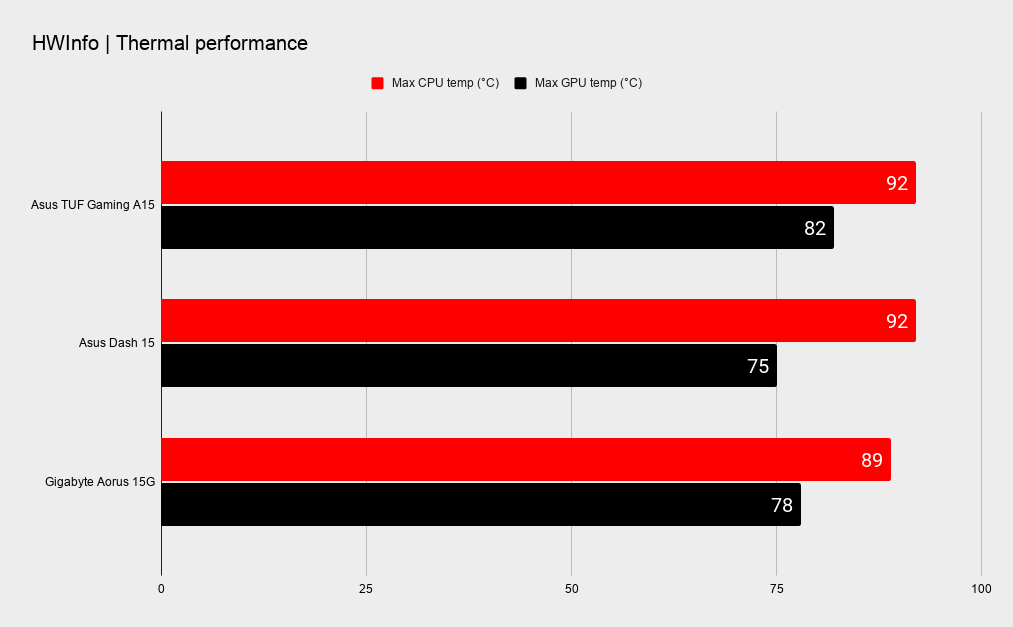
Look at the more CPU-focused benchmarks and you'll quickly see why AMD has managed to make so many inroads against Intel in laptops. The multi-core Cinebench R20 3D rendering and X264 video encoding results are so far ahead of Intel, it's almost embarrassing. This machine is almost twice as fast as the Asus TUF Gaming Dash 15 at video encoding, and a good chunk faster than the otherwise more-capable Gigabyte Aorus 15G.
This performance does come at a cost though—this is a noisy and hot machine.
Fan profiles are important to any laptop these days, and the impact they can have on the usefulness of a machine can be significant. The TUF Gaming A15 is a case in point, as it's a little too loud using the 'Performance' profile for my liking, and really not much different from the 'Turbo' profile both in terms of noise levels and performance. Indeed this would have been a better experience all around if Asus had tweaked the default profile to be a little quieter, even if it meant losing a few frames.
Drop it down to 'Silent' mode though, and you can enjoy a whisper quiet bit of gaming without the usual jet-engine backing track. The performance does drop notably though. By way of example, F1 2020 dropped from over 100fps to 60fps. Which is still more than playable, but you are suffering for your quiet gaming. Metro Exodus drops from 65fps in Ultra settings to 45fps, which is a bit more of a problem. If you're playing newer, more demanding games, then you're probably going to have to get used to the noise.
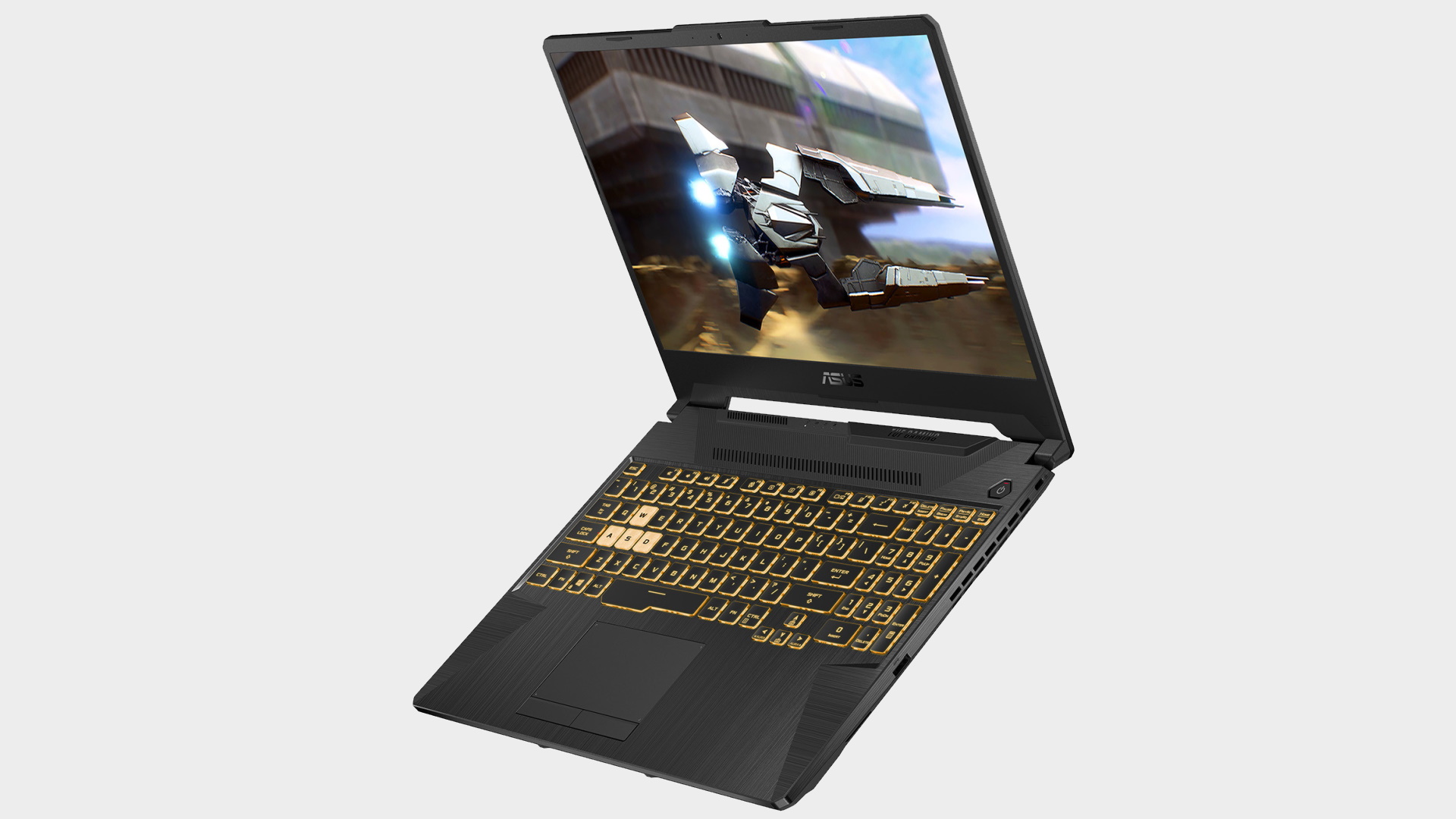
Truly, this is a lot of new mobile tech at a decent price, albeit with a somewhat uninspiring chassis. It runs a bit hot, and can be loud due to the overworked fans. Realistically that means that the RTX 3060 may be a better option here, which is a shame, because the RTX 3070 is a bit of a monster. It'll handle most games with ease. You do have the option of turning on Silent mode, although then it feels like you're paying over the odds to run everything artificially capped.
Asus has done some great work upgrading the machine as a whole, with the highlight being the 240Hz screen. It simply looks great and is superb for high framerate gaming. Something that isn't lost on the fact that it's paired with a GPU that can actually hit those impressively high framerates. The CPU has plenty of grunt for more serious pursuits, and the 1TB NVMe SSD makes for a speedy all-around experience too.
In terms of value for money, Asus sets the bar pretty high for the TUF Gaming A15. $1,799 (£1,600) for an RTX 3070 gaming machine is pretty decent value right now, and the fact that it's backed up with such a capable CPU is to be admired. It just needs to be cooler and quieter. If Asus can somehow battle the laws of thermodynamics and make that happen, then this would be a machine worthy of an entry on our best gaming laptops guide. As it is, it's merely a really good gaming laptop.
In an age of thin and lights, the TUF Gaming A15 needs to run cooler and quieter than this to justify its inherent chunkiness.
Alan has been writing about PC tech since before 3D graphics cards existed, and still vividly recalls having to fight with MS-DOS just to get games to load. He fondly remembers the killer combo of a Matrox Millenium and 3dfx Voodoo, and seeing Lara Croft in 3D for the first time. He's very glad hardware has advanced as much as it has though, and is particularly happy when putting the latest M.2 NVMe SSDs, AMD processors, and laptops through their paces. He has a long-lasting Magic: The Gathering obsession but limits this to MTG Arena these days.
